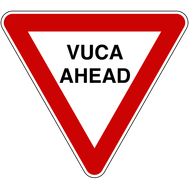 Customer-Centric, Employee-Centric, Stakeholder-Centric, Manager-Centric, Rule-Centric, Child-Centric, Parent-Centric, Egocentric, etc. Centric behavior suggests that something or someone is at the center of all your thinking, conversations, and behaviors. We have seen so many recent examples of centric behavior that fly in the face of all common sense. United Airlines and various police departments continue to keep our social media conversations active regarding what appears to be overplayed rule-centric behavior. Just because it is legal or part of policy and procedure, hardly suggests it is the right reaction. In general, I believe that every organization employs intelligent leaders and employees who at large, want to do the right thing. They want to be of service, follow the rules, and get their work done without causing problems. Unfortunately, some people have become unconscious to their centric behavior and tendencies. My argument is not that centric behavior is bad, it is just overemphasized when it guides all reactions. In another life, when I worked as an HR director, I constantly battled my own centric behavior. If I sided with employees too much when they complained about their manager or the organization, I could be accused of being employee-centric and risk management’s trust. If I ruled for the managers too much, employees would not trust HR and think I was manager-centric. It is a tough balancing act that requires a conscious effort to see everyone and everything as unique while managing the policies and procedures that necessitate some type of consistency. Now that I work as an executive coach, I see first-hand how leaders struggle, as I did, trying to mitigate their centricity. Some leaders have such a strength of empathy they have become employee-centric in their interactions and often unknowingly put their company at risk by not representing decisions as a leader or representative of their organization. Sometimes leaders are so conscious of the marginalized voices in their midst; they misrepresent the intentions of other leaders who have a different centric lean. Then there are leaders who feel discomfort with taking a case-by-case perspective and rely heavily on what they can see, hear, and understand from a literal perspective. They rely on history and conformity and may be reluctant to consider new information that emerges, which requires a deeper level of sense-making and adaptability.  It requires a level of discernment to not become too centric. Effective leaders, who are committed to their own development, can hold multiple perspectives and see the relevance in each viewpoint without being paralyzed by the tension. Our world barely operates in simple terms anymore. We are lucky when things are just complicated as most of leadership swim in the dark waters of volatility, uncertainty, complexity and ambiguity (VUCA). Our VUCA world requires us not to be subject to our centric thinking and behaving but to become instead conscious of it so we can make effective decisions. Leaders need to be willing to talk amongst themselves about their centricities and work with their executive coaches to ensure they are not overly reliant on a certain type of belief system. In what ways might you be overly centric? |
Carrie Arnold, PhD, MCC, BCCIn no particular order: Author | Dog mom | Speaker | Reader | Mom to human offspring | Wife | Lover of Learning | Leadership coach & consultant, The Willow Group | Faculty for Evidence-Based Coaching at Fielding Graduate University
�
Categories
All
|
The Willow GroupCarrie Arnold, PhD, MCC
|
Silenced and Sidelined: How Women Leaders Find Their Voices and Break Barriers
|
|
© 2020 The Willow Group, LLC





